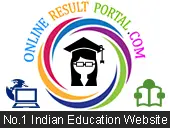The Central Board of Secondary Education (CBSE) has introduced the ‘Saransh’ software tool. This review tool helps to not only monitor the progress of the pupils’ but also improve their overall academic performance.
The ‘Saransh’ is a self-assessment software tool and helps to establish an effective interaction link between parents and educators. The educators get data to supervise and analyze the all-round performance of the students. More so, they can ensure that the performance of the pupils is in line with the stipulated academic goals.
The ‘Saransh’ software is an initiative by the Central Government that comes under its ‘Digital India Program’. As part of the ‘Saransh’ initiative, the CBSE teaching methods become transparent and help parents to check how their children are faring in school.
Also, the ‘Saransh’ tool is accessible in all schools that have affiliation with the CBSE. Using this tool, both parents and teachers can take corrective measures to make the requisite changes in the current learning methods. Their suggestions on how to enrich the students’ learning experience are considered.
The ‘Saransh’ software is accessible to guardians and teachers via a web portal and a mobile application.
Here are some of the services that the CBSE review tool ‘Saransh’ provides:
- Students in classes IX and X can access the tool. Also, this software collates all the data that relates to Problem Solving Assessment (PSA) from Classes IX until XI, and Class XII Board Exam. Plus, the tool displays an exhaustive picture of Class X from the year 2007 onwards and Class XII from the year 2009 onwards until the latest academic session.
- With the ‘Saransh’ tool, the CBSE-affiliated schools can get an overview of their performance in both scholastic and non-scholastic areas. This data is available at an aggregate level and the student-level in schools. Moreover, the performance metrics are available via numbers and charts for more clarity.
- Through ‘Saransh’, schools can compare their performance with other schools under different categories. These include State, Regional, pan-India level, and within various school groups (Public, Private, Central Tibetan Schools (CTS), Kendriya Vidyalaya Sangathan (KVS,)Jawahar Navodaya Vidyalaya Samiti (JNVS).
